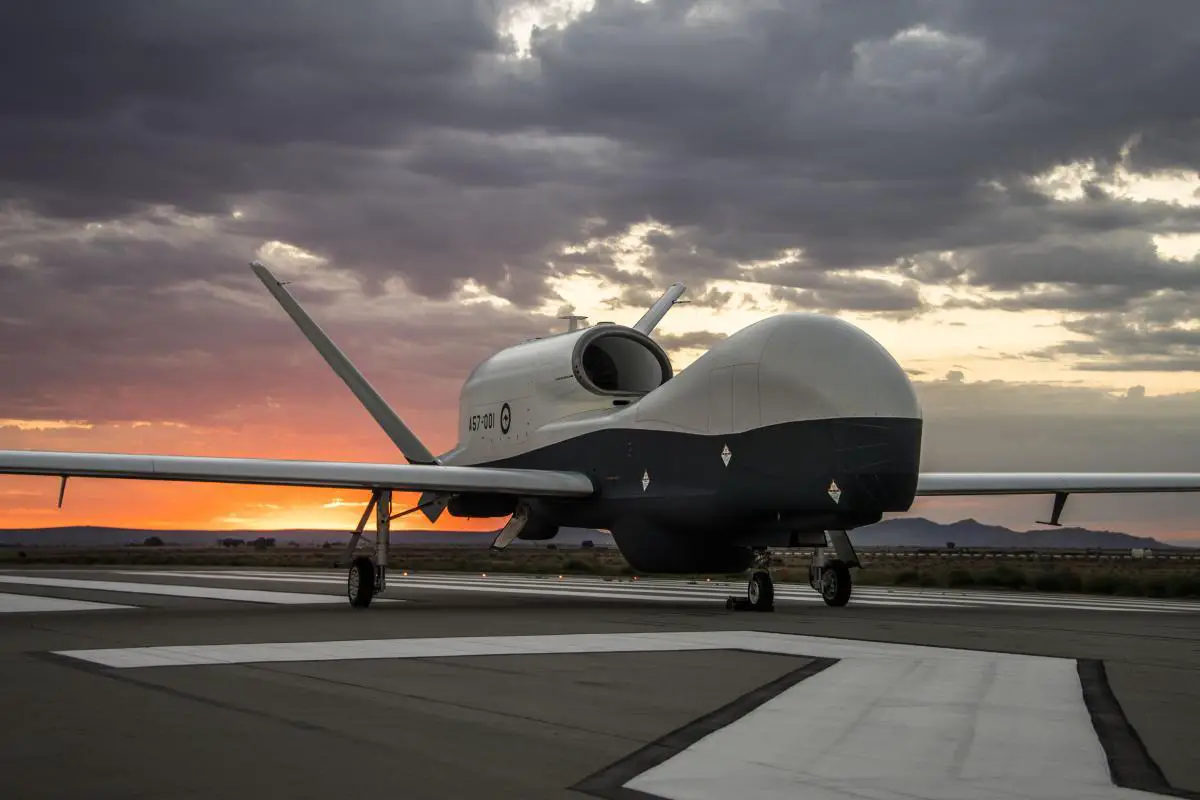Northrop Grumman Systems Corp., San Diego, California, is awarded an $83,118,831 cost-plus-fixed-fee order against a previously issued basic ordering agreement. This order provides for retrofit of two MQ-4C Triton unmanned aircraft systems (B9 and B10) and one main operating base (MB-6P) to an Integrated Functional Capability Four, multiple-intelligence configuration for the Navy and the government of Australia. Work is expected to be completed in June 2026. Fiscal 2023 aircraft procurement (Navy) funds in the amount of $82,818,831; and Foreign Cooperative Funds in the amount of $300,000 will be obligated at the time of award, none of which will expire at the end of the current fiscal year. U.S. Naval Air Systems Command, Patuxent River, Maryland, is the contracting activity.
The Northrop Grumman MQ-4C Triton is an American high-altitude long endurance unmanned aerial vehicle (UAV) under development for the United States Navy as a surveillance aircraft. Together with its associated ground control station, it is an unmanned aircraft system (UAS). Developed under the Broad Area Maritime Surveillance (BAMS) program, the system is intended to provide real-time intelligence, surveillance and reconnaissance missions (ISR) over vast ocean and coastal regions, continuous maritime surveillance, conduct search and rescue missions, and to complement the Boeing P-8 Poseidon maritime patrol aircraft. Triton builds on elements of the RQ-4 Global Hawk; changes include reinforcements to the air frame and wing, de-icing systems, and lightning protection systems.
Australia has considered the MQ-4, both as a military platform and as customs enforcement platform; senior customs officials have doubted the effectiveness of the planned seven MQ-4C to detect small boats in the country’s northern waters, especially through cloud cover. In 2013, Air Marshall Geoff Brown, head of the Royal Australian Air Force, stated that Australia was considering purchasing more manned P-8 Poseidon aircraft and reducing the number of MQ-4Cs planned to be bought for the RAAF. On 16 February 2014, it was reported that the Australian government would seek the purchase of seven MQ-4C Tritons; in addition to locating ships and aircraft, it would also be used to detect seaborne asylum seekers. Alongside the P-8, the MQ-4 is to replace the elderly P-3 Orion fleet.
On 13 March 2014, Prime Minister announced Australia’s intention to buy the MQ-4C Triton and become its first foreign customer. The Triton buy is part of the Australian Defence Force’s Project Air 7000 two-phase Orion replacement program; Phase 1B entails procuring the Triton, and Phase 2B is the acquisition of eight-to-twelve manned P-8A Poseidons in 2017. RAAF Tritons and Poseidons will be used in a similar complementary fashion as with U.S. Navy operation, where the MQ-4C performs high-altitude broad area surveillance missions, allowing the P-8A to be more dedicated to anti-submarine and anti-surface warfare, search and rescue response, and electronic intelligence missions. No. 9 Squadron was re-raised to operate the Tritons in June 2023, ahead of the expected delivery of the RAAF’s first Triton in 2024.












